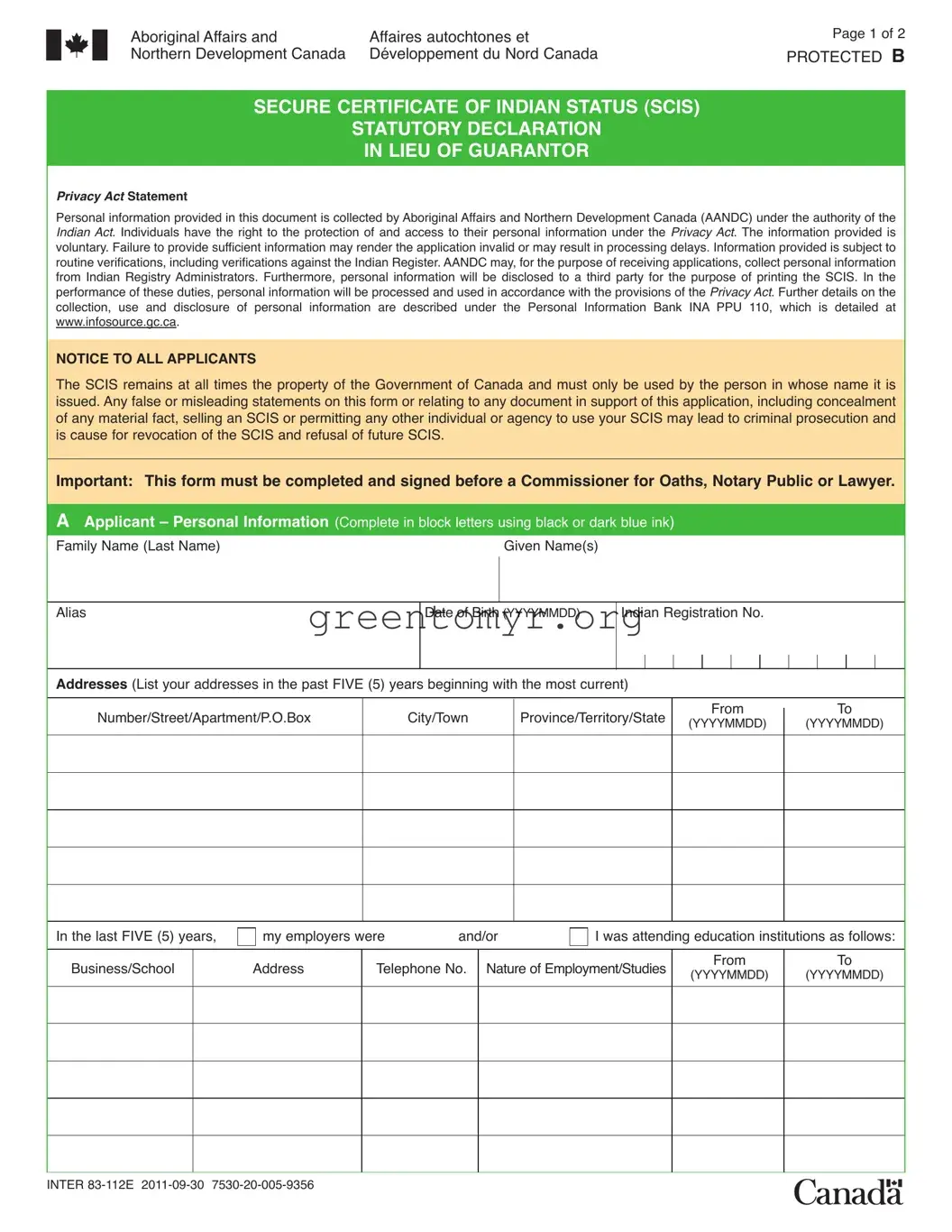Filling out the Declaration Guarantor form can be straightforward, yet several common mistakes often occur. One frequent error is providing incomplete personal information. Individuals sometimes forget to fill out their full names or leave out essential details such as their Indian Registration Number. This can lead to processing delays or even invalid applications.
Another mistake involves listing addresses inaccurately. It is important to include all addresses from the past five years, starting with the most current. Some applicants overlook prior residences or provide incorrect dates for their addresses. This can create confusion and hinder identification verification.
Many applicants also fail to include the required references. The form specifies that two individuals who are not relatives and have known the applicant for at least two years must be listed. Omitting one or both references will result in an incomplete form.
Inadequate detail about references is another common issue. Applicants sometimes provide insufficient information regarding their references' relationships, addresses, or contact numbers. Inaccurate or missing details can prevent the verification process from taking place.
Photographs can also pose a challenge. One reference must sign a passport-style photograph with a statement confirming the likeness. Some applicants neglect to ensure their reference signs the photo, which can result in additional hurdles in the application process. Both references are also required to sign the identity documents, and failure to do so can lead to complications.
In addition, some people do not properly fill out the declaration sections. Stating that they are unable to obtain an eligible guarantor must be clear and precise. Misunderstanding this section can lead to a misunderstanding of the applicant's situation.
It is also vital that applicants complete the form in block letters using black or dark blue ink. Using the wrong type of ink or handwriting can make it difficult to read the information provided. Clarity is essential for processing.
Finally, individuals must remember to sign the form in the appropriate sections. Some forget to include their signatures or the date. This omission can delay the application and cause frustration. Ensuring all parts of the form are fully complete and correct is critical for successful processing.


